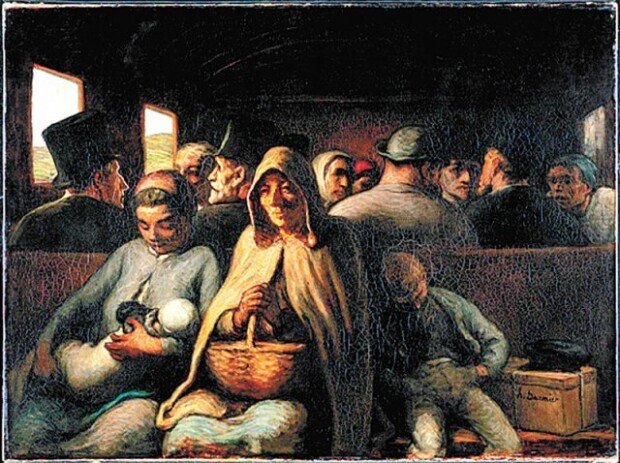Hell-like world
Hell-like world
Posted January. 12, 2023 08:42,
Updated January. 12, 2023 08:42

“Folks in heaven have no reason to yearn for hell at all. However, we, a family of five, wished to live up there spending days in hell,” writes South Korean author Cho Se-hui in the book “Dwarf Launches a Little Ball.” Depicting what it was like to live in Korea during the 1970s, bruised by social inequalities, this novel is reminiscent of “The Third Class Carriage” drawn by 19th-century French artist Honoré Daumier.
The drawing shows the inside of a third-class carriage in the middle of winter. Many travelers sitting on the uncomfortably hard benches are crammed like sardines in this filthy, stuffed, and nippy space. A poor family is seated in the first row. A young mother on the left holds her baby in her arms, waiting to open up her top for breastfeeding once the little one wakes up. An old lady seems to be contemplating with a basket put on her knees. A young boy on the right, presumably tired, dozes off. We have no clue whether the kid’s father has gotten on the train with his son.
Daumier earned great fame for putting the bourgeoisie and those in power into an acutely sarcastic perspective. However, one of his main artistic interests was always paid to the socially marginalized. He mastered how to portray the depression and gloominess lying deep in the hearts of laborers, cloth washers, and drug dealers. Born to a poor working-class family, he also struggled financially in an impoverished environment throughout his lifetime, probably making it easy for him to sympathize with those in need. Even after debuting as an artist, he made ends meet by drawing caricatures or illustrations. It was in his late 40s when he started working on the series “The Third Class Carriage.” Back then, he walked through the darkest days of his life not only health-wise but also financially after recovering from a serious illness. He produced as many as three drawings under the same theme. This drawing is the series’ last one featuring the highest level of artistic perfection of the three. However, it may come as no surprise that progressive representations are not welcomed right away. Just one year before he died, the drawing was released to the public.
Just as Cho symbolizes poor folks living in the urban area as dwarfs, Daumier likens carriages to the symbol of inequalities. The third-class train must be representative of the hell-like world in which the poor suffer to survive. Could the impoverished family in the drawing dream of heaven? Would the young boy be able to grow up to afford a first-class ticket? Could we say that things of our time have got better than the realities of that time depicted in the drawings? Honestly saying, few of us can give a definite yes to any of these questions.



![패딩을 드라이클리닝?…오리털 기름기 녹여 보온력 뚝 [알쓸톡]](https://dimg.donga.com/c/138/175/90/1/wps/NEWS/IMAGE/2025/12/22/133012676.3.jpg)



